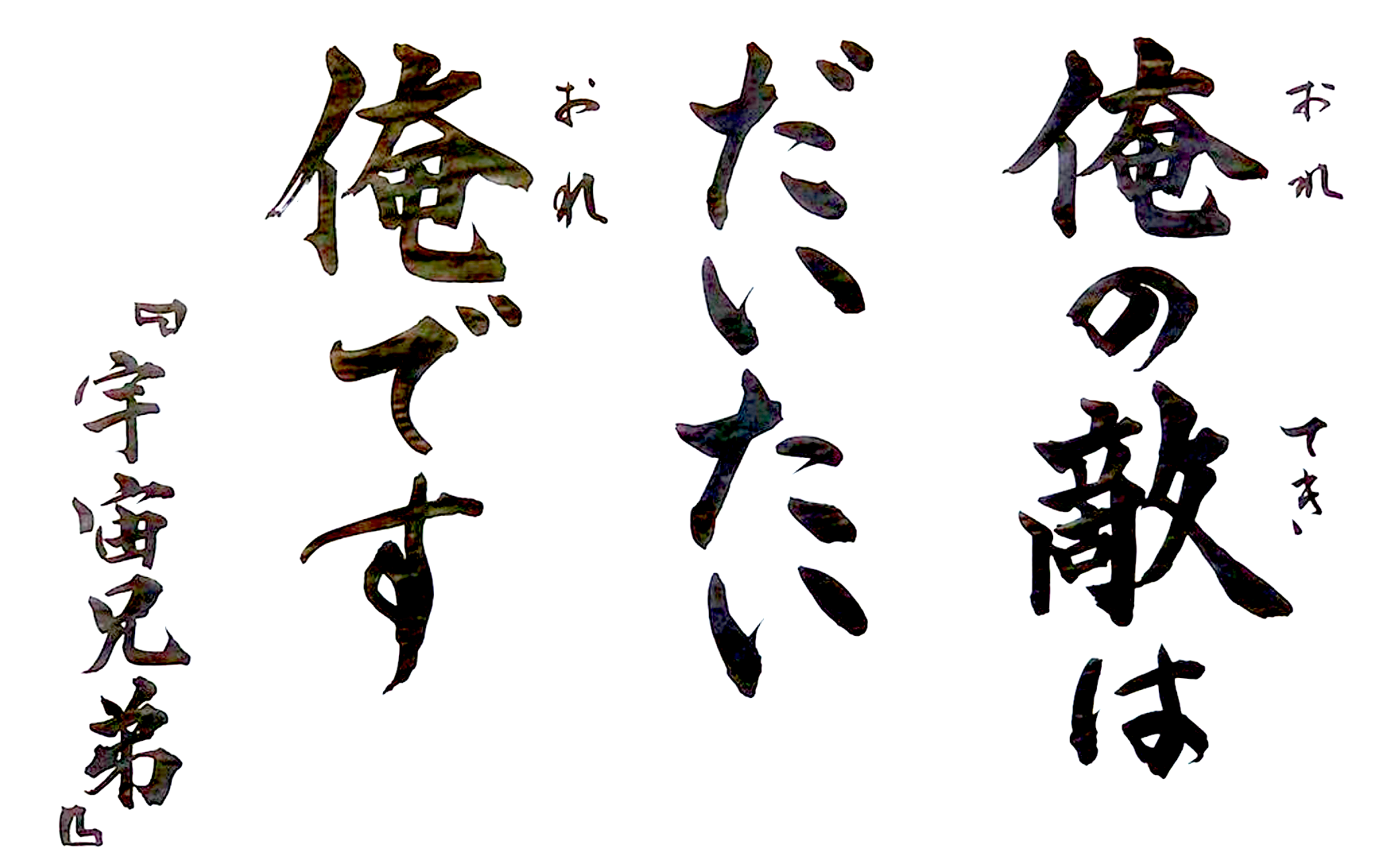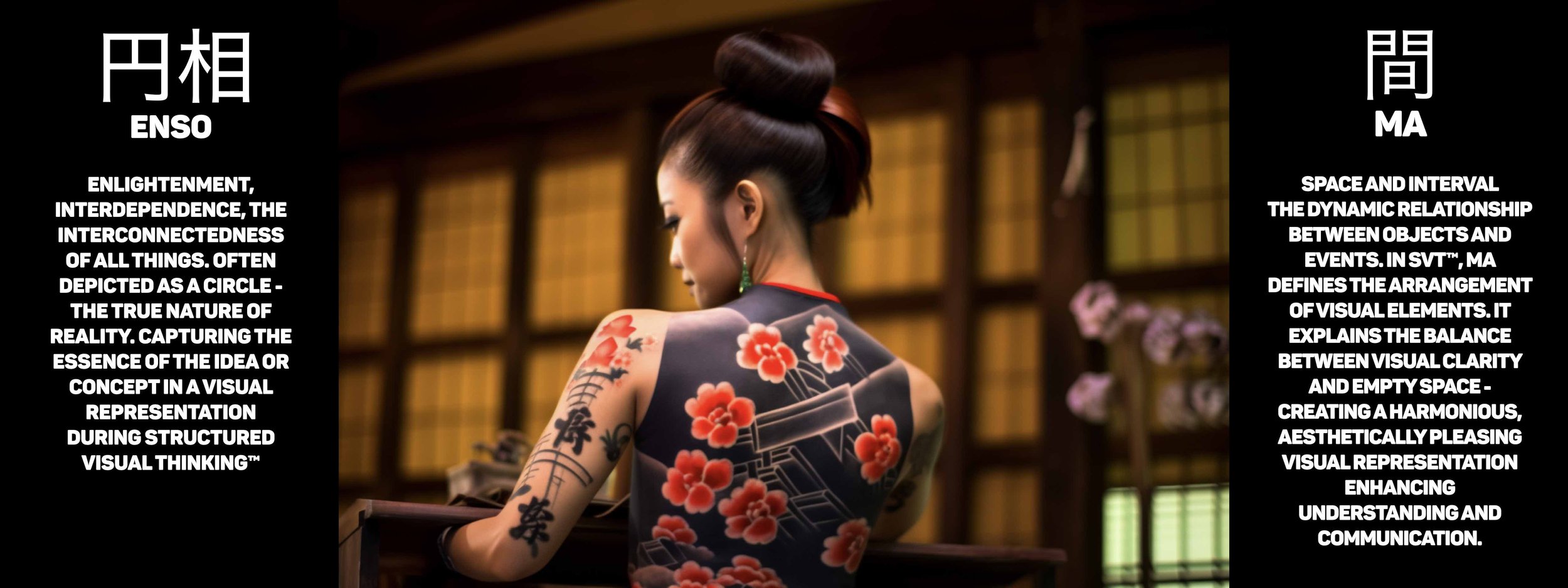Being More Japanese
I’d been to Japan a couple of times before. This was different. There was time to soak it up!
What hit me was everything.
Everything works. It’s clean and secure. Tiny children travel safely to school alone.
My Enemy. It’s Me
I love their meaningful traditions, spirituality, genuine politeness, smiling greetings, and heartfelt service and care. The attention to detail is quite remarkable. The signage and language remain a mystery, but Google Translate via camera changes everything.
The Japanese have an aura about them that has emerged over generations.
You feel it everywhere and in everything. They sum it up in one word: - Wa 和 - harmony. Harmony with nature and a surrender to the seasons as they evolve.
Everything is a ritual, from saying hello, to serving you—precision and care are woven into everything. Even the ground crew stands in line, waves, and then bows your aircraft farewell. Everything is a spiritual process, quite unlike any function in the West.
Structured Visual Thinking™
It’s a glaring and profound distinction between Eastern and Western cultures.
You know when you enter a Japanese restaurant, and everyone shouts Irasshaimase? (Welcome). Well, I’ve never known what to say in response, let alone remember or be able to say whatever it might be.
Thankfully, a bow, a nod, or a smile is enough.
This is excellent news because Japanese words and my memory are in total dispute. I try to retain them, but they sneak out.
I even found myself speaking French to a Kyotan bakery owner. I know.
Translating Japanese philosophies into Structured Visual Thinking™ - full definitions at the end.
Japanese As Strategic Framework
Kanji, Katakana, and Hiragana are the three scripts used in the Japanese writing system.
I fell in love with Kanji decades ago. They’re called ideographic characters, which means each character represents a whole word or concept.
It makes writing and learning complex, but they’re very compact, and what a great thought. So much meaning can be conveyed in something so small.
What I didn’t know were Katakana and Hiragana. They are the other two visual writing systems. They’re known collectively as Kana. They were initially derived (by Buddhist monks) from portions of - or simplified versions of the Chinese characters in Kanji.
A single character represents an entire concept, a word, or part of a word. It’s all based on Chinese characters that date back to the 5th century AD, if not earlier. Understanding their meaning is beyond fascinating. Most of the ideas are mind-blowing and profound.
An Example:
As I write this, my current favourite example of profound meaning is Kūki wo yomu 空気を読む.
I often have to describe the notion of context and what to do about it. I use various definitions, such as “the realm within which a lot can happen”. “The circumstances that surround the event”. “The forces, trends, and dynamics within which we operate”—all words that do little to explain the capability needed to do much about it.
In strategic terms, being aware of the context and doing something or not can mean success or death. Kūki wo yomu 空気を読む translated literally, means ‘read the air’. How sublime and powerful is that?
As the world becomes increasingly crazy, using words as visual symbols has become more significant. Emojis, mascots, and ideographs have immense potential to carry large amounts of information quickly.
This correlates with our visual approach to helping teams grapple with strategies and allowing them to see the meaning of the concepts in a graphical form. I am not advocating that we all learn Japanese or Kanji, but they become even more beautiful the more you appreciate what they represent.
I’m Turning Japanese.
I applied Japanese concepts to our visual framework language, Structured Visual Thinking™, purely as a thought experiment. I wanted to see how Japanese ideas aligned with what we do and was interested in how they could further encourage leaders to think more deeply.
If you are Japanese and I have mangled any of this, ごめんなさい Gomen Nasai - and please help me make this more accurate.
You will find the detailed meanings at the bottom.
Koans Are One Of Our Core Tools
Koans are often paradoxical questions that disrupt ordinary thinking and prompt deep contemplation. They challenge conventional logic and aim to shift one's perception.
Koans expand and challenge thinking beyond conventional boundaries in structured visual thinking (critical and strategic thinking). They encourage questioning assumptions, exploring new perspectives, and challenging established paradigms. Asking questions through structured visual thinking forces deeper exploration and reveals hidden insights.
For example, "What is the colour of the wind?" challenges sensory and rational limitations. Like “reading the air” - Kūki wo yomu 空気を読む. It makes you think. Critical and strategic thinking prompts individuals to go beyond observable data and consider abstract concepts, metaphors, and multiple dimensions of a problem or situation.
And by encouraging broader perspectives, we uncover hidden insights and foster nuanced strategies.
The Power of Ma 間
The world has certainly gone nuts. There’s little time for pause. I love my Ma.
Ma represents the dynamic relationship between objects and events—the importance of space and intervals. How everything is laid out in the frameworks. That’s Ma. In strategic development, Ma highlights the significance of being able to see and honour parts of the system—let’s say the value system of the customer journey. It gives space and priority to the many moments that matter.
Creating intentional pauses, gaps, and areas for reflection, communication, and collaboration within a team is where everyone can see what’s missing or offer up a fresh thought.
Ma creates a conducive environment for creativity and innovation to flourish. I always say that we are comfortable with moments of silence, that’s when the question (Koan) stimulates genuine thought. By incorporating moments of silence or thoughtful contemplation, the audience gets to explore new ideas and think outside the box.
A New Leaf - A Blank Page
A scary place for the brainwashed and a traditional place many leaders have to live. In Japanese philosophy, Shoshin translates to ‘beginner's mind’. It refers to approaching a situation free from preconceptions and biases. And Mushin—an enlightened state without emotional attachment to what has gone before.
We struggle to get to the truth because people are invested in decisions they made years ago. It’s their legacy; it can’t possibly need to change.
In Structured Visual Thinking™, adopting a shoshin mindset allows team members to explore ideas and possibilities without being limited by past assumptions or fixed perspectives. It encourages curiosity, creativity, and fresh insights.
Mushin is a state of mind where thoughts and emotions are set aside. People who can act intuitively and spontaneously in the present moment. In the context of Structured Visual Thinking™, Mushin can help facilitators and participants stay focused and fully engaged in the process, letting go of distractions and unnecessary mental chatter.
We need much more Shoshin and Mushin
Always Searching For That Elusive Shift In Mindset
What always kills the best outcome? Mindset. What always scuppers change or transformation? Mindset. Mostly, these mindsets are so fixed that new ideas can’t land.
The objective is to foster open awareness and non-attachment to fixed concepts or outcomes. In the context of structured visual thinking, embracing the idea of Mu allows team members to let go of rigid expectations and preconceived notions, fostering a mindset of openness and receptivity to unexpected possibilities and innovative solutions.
Zanshin encourages heightened consciousness, the ability to focus and maintain continuous awareness even after the decision and action have been completed. In Structured Visual Thinking™, maintaining zanshin means staying attentive to the evolving visual representation, observing new connections and spotting fresh patterns—using that awareness to refine and guide the conversation and decision-making process.
The Art Of Strategy
Working with leaders worldwide taught me a lot about whether they would succeed.
It taught us how to successfully foster deeper insights, collaboration, and transformative experiences within the team. Using ideographs and visualization in developing strategies aligns well with Japanese philosophies and visual language.
Completeness of thinking, mindfulness, openmindedness, focus, thoughtfulness, and the idea that everything is connected to everything else that matters. All these things are next to impossible to convey.
Translating my big themes into concepts from Zen was fascinating for me.
I thought about the stuff that’s so hard to talk about.
I’ve used Midjourney throughout to create structured visual ideographs.
Japanese Concepts Are An Art Form
Structured: 構造 (Kōzō)
Visualization: 可視化 (Kashika)
Thinking: 禅思考 (Zen Shikō)
Strategy: 戦略 (Senryaku)
The Zen Framework
Each framework segment leverages profound insights and proven human knowledge of Eastern philosophies and practices.
Purpose/Vision/Goals: 生き甲斐 (Ikigai)
Context/Dynamics: 文脈 (Bunmyaku)
Leadership: 奉仕的リーダーシップ (Servant Leadership)
Mindset/Culture: 初心 (Shoshin)
Storytelling: 物 語り (Monogatari)
Narrative: 起承転結 (Kishōtenketsu)
Branding: ゆるキャラ (Yuru-chara)
Harmony/Culture/Operation: 和 (Wa)
Continuous Improvement/Performance: 改善 (Kaizen)
Structure/Organization: 構造 (Kōzō)
Focus/Governance: 無心 (Mushin)
Underpinning Principles
Alignment: 心 (Kokoro)
Resilience: 我慢 (Gaman)
Innovation: ものづくり(Monozukuri)
Sustainability: 自然 (Shizen)
Collaboration: 報・連・相 (Ho-ren-so)
Teamwork: 共有 (Kyōyū)
Continuous Learning: 守破離 (Shuhari)
Well-being: 不登校 (Futoko)
Empowerment: 臨議制度 (Ringiseido)
Determination: 武士道 (Bushido)
Respect: 敬 (/Kei)
Long-Term View: 長見 (Naga Miru)
Discipline and Hard Work: 頑張る (Ganbaru)
THE GLOSSARY
Enjoy - The Detailed Definitions
文脈 - Bunmyaku - Context
Kūki wo yomu - 空気を読む translates literally to ‘read the air.’ It means understanding the context, the unspoken rules, and the social cues within a particular situation. It involves sensing the dynamics, mood, or emotions of others and, more generally, just what’s going on.
Honne and Tatemae - 本音 and 建前 refer to the contrast between a person's true feelings and desires (honne) and the behaviour and opinions one displays in public (tatemae). Understanding the difference between these two, and when each is appropriate, is another way of understanding the context of Japanese society.
構造 Kōzō - Structure
The structured arrangement and interrelationship of parts within a system. It’s applied to physical objects like infrastructure, processes, and systems, as well as abstract concepts like organizations or strategies. It denotes the importance of interdependence—how each part of a system contributes to the functioning and effectiveness of the whole.
組織 Soshiki - akin to Kōzō but has a deeper meaning, referring not just to an organizational structure but also to how parts of a system work together harmoniously. The philosophy of 和 (wa), or harmony, can be seen as a philosophical underpinning.
可視化 Kashika - Visualisation
Visualization - the process of representing data, information, and concepts in a visual form. This makes complex ideas more easily understandable and, consequently, aids the analysis and interpretation of data. It is particularly relevant in strategic contexts, where complex information must be understood quickly and clearly.
While the term 可視化 (Kashika) is generally used for visualization, 見性 (Kensho) is a Buddhist term referring to seeing one's true nature. While this isn't about visualizing a concept or a strategy, it can be seen as a metaphorical visualization of one's internal state, which is crucial to a successful strategy.
思考 Shikō - Thinking
禅思考 Zen Shikō - Zen thinking emphasizes a state of focused contemplation and awareness. It involves clearing the mind of distractions and preconceptions to fully engage with the current reality without being clouded by biases or prejudices. Thinking is a broad and critical concept essential for strategy and progress.
Visualization in strategic thinking helps. It forces a clearer understanding of the current situation and the challenges and opportunities that arise. It leads to more effective and insightful strategies. It relates to the required mindset for strategy creation, which requires a high degree of discipline and control over one's thoughts. This is essential for structured and visual thinking, as it requires organizing ideas logically and coherently.
By promoting mindfulness and focus, Zen Shikō enhances the ability to structure thoughts effectively. Zen traditions emphasise direct, non-conceptual forms of perception, often associated with visual forms of understanding.
Zen Shikō aligns with visual thinking by encouraging a direct, intuitive understanding of information through all the senses rather than relying purely on verbal or analytical processes.哲学的思考 Tetsugaku-teki shikō describes the philosophical dimension of thinking. Eastern philosophical traditions focus on mindfulness and awareness as integral parts of the thinking process.
戦略 Senryaku
Strategy - a high-level plan designed to achieve specific goals. In business and commercial contexts, it emphasizes long-term planning and foresight, with an understanding of the various elements that affect the successful realization of the goals—context, dynamics and culture, for example. In The Art of War by Sun Tzu, strategy is defined as understanding conflict dynamics and seeking to win without fighting.
奉仕的リーダーシップ - Servant Leadership - Leadership
Although not traditionally Japanese, this concept has been adopted. A servant leader prioritizes the team's needs, helps people develop and perform as highly as possible, and puts service before self-interest.
武士道 - Bushido - Determination
The ‘way of the warrior’ - a code of moral principles the Samurai were required to observe. Bushido emphasizes loyalty, self-discipline, respect, ethical behaviour, and self-sacrifice. Many of its principles have been applied to leadership, such as the idea that a true leader must be willing to sacrifice for the team's good.
臨議制度 - Ringiseido - Empowerment
The principle encourages decision-making to be done by consensus rather than by the dictates of upper management. Each team member provides input, and decisions are made with everyone's agreement. This approach fosters cooperation and mutual respect.
守破離 - Shuhari - Continuous Learning
The concept describes the stages of learning through mastery - typically in martial arts and applied to leadership and business contexts. Shu 守 protects, refers to following the teachings of one's master, Ha detaches refers to breaking tradition to develop one's techniques; and Ri 離 leave refers to achieving such mastery that one no longer needs to consciously think about what they're doing. This can be seen as a model for developing leadership skills: learning from others, creating your style, and finally reaching a point where good leadership comes naturally.
和 - Wa - Harmony
The essential concept in Japanese society dictates that one should strive for peaceful unity and conformity within a social group. In terms of leadership, this would mean creating a harmonious team environment where conflict is minimized, and teamwork is prioritized. Seeking to maintain harmonious relationships within the company and with its stakeholders. This results in a consensus-based decision-making approach, where everyone's opinions are considered. The principle of harmony also extends to the business model, reflected in long-term relationships with suppliers, customers, and even competitors.
報・連・相 - Ho-ren-so - Collaboration
Houkoku (report), Renraku (inform), and Soudan (consult). Encouraging collaboration through transparency, communication, and involvement in decision-making.
初心 - Shoshin - Mindset
Shoshin translates as ‘beginner's mind’. A concept from Zen Buddhism refers to openness, eagerness, and lack of preconceptions when studying a subject, even at an advanced level, just as a beginner would. It shares some similarities with a growth mindset, as it values openness to learning and personal development.
生き甲斐 - Ikigai - Purpose
One’s reason for being. The vision. It embodies a mindset of finding joy, fulfillment, and balance in the daily routine of life. One's Ikigai is at the intersection of what you love, what the world needs, what you can be paid for, and what you're good at. Ikigai can offer a holistic framework for personal and business visions that merges passion, mission, vocation, and profession. A future vision might involve finding and following an Ikigai that contributes positively to the world.
改善 - Kaizen - Continuous Improvement
Change for the better - a key principle in Japanese productivity philosophy. It’s applied to business, government, personal development, etc. Kaizen reflects a mindset of continuous learning, improvement, and growth.
我慢 - Gaman - Resilience
Gaman translates as enduring the seemingly unbearable with patience and dignity. This concept is generally associated with resilience, self-control, and stoicism, deeply rooted in many Japanese cultural, historical, and philosophical contexts.
心 - Kokoro - Alignment
It’s often translated as heart or spirit, but it represents the mind, heart, and spirit as a unified conscious experience. It’s a mindset where one's thoughts, feelings, and spirit are aligned.
無心 - Mushin - Focus
In Zen Buddhism, it means ‘no mind.’ It's a state of mind without fear, anger, or anxiety. Mushin is often described as a state of total focus, which can be equated to a kind of flow state. The Japanese philosophy is deeply rooted in discipline, respect, harmony, and continuous improvement. While there isn't a direct Japanese philosophical treatise on business models and operations, these underlying principles significantly shape business culture in Japan and, therefore, indirectly guide the business models and operations.
敬 - Kei - Respect
Respect for others is crucial. This respect translates into a hierarchical structure where experience and seniority are highly valued in business operations. Business etiquettes, such as exchanging business cards with two hands and a bow, reflects this value. Respect also extends to customers, with special emphasis placed on customer service.
長見 - Naga Miru - Long-Term View
Japanese businesses tend to take a long-term view when making decisions. This is seen in their commitment to lifelong employee employment and long-term relationships with suppliers and customers.
頑張る - Ganbaru - Discipline and Hard Work
The principle of Ganbaru means doing one’s best and not giving up. It is reflected in the strong work ethic of Japanese employees and the high standards Japanese businesses set for their products and services.
共有 - Kyōyū - Teamwork
Also known as 集団主義" Shūdan Shugi - The emphasis on collective well-being over individual success is a core value in Japanese culture. In business, this is seen in their team-oriented approach and group decision-making process.
Japanese culture has deep roots in several philosophies, notably Buddhism, Shinto, and Confucianism, which influence the language and the interpretation of concepts.
ものづくり- Monozukuri - Innovation
The concept includes meticulous attention to detail, commitment to quality, continuous improvement, and the amalgamation of innovation and traditional skills. This concept emphasizes sustainable and environmentally friendly manufacturing practices as we move into the future.
自然 - Shizen - Sustainability
This term refers to nature, a significant element in Japanese aesthetics and philosophy. Respect for nature must continue to shape future visions, particularly with the escalating global emphasis on sustainability and eco-friendly practices.
不登校 - Futoko - Well-being
Future business and individual philosophies will encompass a deeper understanding of work-life balance, psychological well-being, and accommodating different working or learning methods.
物 語り - Monogatari - Storytelling
Storytelling is deeply ingrained in the culture and dates back thousands of years. Japanese folklore, myths, and fables have traditionally been used to transmit cultural knowledge, moral lessons, and societal norms. Even modern Japanese media, such as anime and manga, heavily rely on storytelling to deliver messages, ideas, and themes.
起承転結 - Kishōtenketsu - Narrative
Kishōtenketsu is a narrative structure used in traditional Chinese and Japanese narratives, which focuses on developing and contrasting ideas rather than conflict and resolution, showcasing a different perspective on storytelling compared to the Western three-act structure.
ゆるキャラ - Yuru-chara - Branding
Branding, in the sense of a company or product having a unique identity, is a relatively recent phenomenon in Japan compared to storytelling. Nonetheless, it's become a significant part of the Japanese economy and culture. Japan's branding often concerns quality, craftsmanship, and aesthetic appeal, as seen in brands like Sony, Toyota, and Uniqlo. Japan has also mastered using mascots or ‘Yuru-chara’ for branding. Almost every prefecture, city, and company in Japan has a mascot, which helps create a distinctive brand identity and conveys values and stories central to the brand.
おもてなし - Omotenashi - Value Proposition
価値提案 - Kachi Teian - Value Proposition:
The Japanese value proposition often revolves around principles such as 'monozukuri' Monozukuri: 物作り (the art of making things), precision, reliability, and a strong emphasis on customer service or 'Omotenashi'. These values are often communicated through storytelling and branding. For example, a company may share stories about the meticulous craftsmanship that goes into its products to highlight the value proposition of quality and attention to detail.
Shuhari 修羅理
The Japanese concept that’s used to define the three stages of learning.
Shu (following) - the stage of following the rules and instructions.
Ha (breaking) - the stage of breaking the rules and experimenting.
Ri (freeing) - the stage of freedom and creativity.
Karesansui
The careful art of composing arrangements of rocks, water features, moss, pruned trees and bushes. Between them, gravel or sand is raked to represent ripples in water. Zen gardens intend to imitate the essence of nature, not its actual appearance, and to serve as an aid for meditation.
Satori - 悟り a Japanese Buddhist term for awakening, comprehension and understanding—the deep experience of kenshō, seeing into one's true nature. Ken means seeing, and shō means nature or essence. Satori and kenshō are translated as enlightenment.
Kintsugi 金継ぎ
The Japanese art of putting broken pottery pieces back together with gold — is built on the idea that you can create an even stronger, more beautiful piece by embracing flaws and imperfections. It’s part of a broader philosophy of embracing the beauty of human flaws—acceptance of flaws and imperfection.
Zanshin 残心
Translated, zanshin means ‘the mind with no remainder.’ In other words, the mind is completely focused on action and fixated on the task. Everything is aiming. And to hit the target, you must be constantly aware of your body, mind, and surroundings without stressing yourself. It is an effortless vigilance, intentionally acting purposefully rather than mindlessly falling victim to whatever comes your way.
Wabi-sabi 侘寂
Suggesting the transience and imperfection in aesthetics. Seeing beauty in something that might conventionally be perceived as incomplete or imperfect. Appreciating that things are not always permanent - they can be imperfect, yet beautiful.
漢字 - Kanji - An Ideographic Language
An ideographic language is one in which symbols or characters represent a whole idea or concept rather than a specific sound or sequence, as in phonetic languages like English.
Each kanji character represents a concept, object, or idea.
Some of these characters were originally pictograms (simplified images of what they represent), but many have abstracted far from their origins over the millennia.
For instance, the kanji for "tree" (木) somewhat resembles a tree, while the kanji for "love" (愛) doesn't represent the concept in a pictographic way.
Kanji (and other ideographic writing systems) primarily convey meaning by combining simpler elements into complex symbols.
These more specific elements, or "radicals", have meanings and sounds. Combining different radicals in different ways allows you to create characters that express a wide range of meanings.
The kanji for "forest" (森) (for example) consists of three "tree" characters (木). This visually communicates the concept of many trees together - a forest.
The radicals can give a clue about the character's meaning. The kanji "rest" (休) consists of the radical for "person" (亻) and the kanji for "tree" (木). This could be understood as a person leaning against a tree, thus expressing the concept of rest or relaxation.
But while kanji characters can represent whole concepts, they can also represent sounds when combined with other characters.
The characters' reading can change depending on their context, making kanji a complex system that uses ideographic and phonetic elements.
And finally
Sensei
In Japanese and other Asian countries, it is translated as ‘person born before another’ and means ‘teacher’. Popular in martial arts but fundamentally means a leader. Signifying mastery of an art, professionals or people of authority. Accomplished in their skills.
“Culture is the collective programming of the mind which distinguishes one human group from another” - Geert Hofstede
We always feel (more) the intangible aspects of culture. The not so visible, the unspoken rules - the way things are done around here. They are so deeply in our subconscious mind they are automatic. But they define us.













